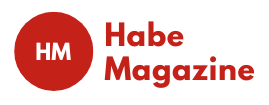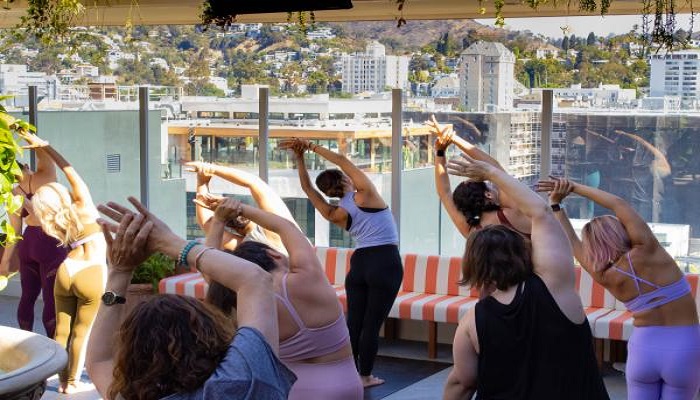Many clothing brands around the world have made an impressionable statement in fashion, but here are our Top clothing brands:
1.Nike:

Established in 1964, Nike is an international sportswear and footwear brand dedicated to inspiring and innovating athletes worldwide with their products.
History: Nike was initially founded as Blue Ribbon Sports by Bill Bowerman and Phil Knight in 1968. By 1971, however, the business was rebranded into Nike Inc and the iconic “Swoosh” logo was introduced. Since then, Nike has become known for high-performance athletic shoes and apparel that deliver style.
Nike’s brand identity centres around inspiring and empowering athletes to perform at their maximum. The brand is well known for producing innovative, high-quality products combining style and functionality.
Product Selection: Nike offers an extensive range of athletic footwear, apparel and accessories designed specifically to address different sports like running, basketball, soccer and tennis.
Marketing and Advertising: Nike’s marketing and advertising campaigns aim to encourage athletes to push past their limits and achieve greatness. They have collaborated with top athletes and celebrities to generate buzz around its products. Its ads feature inspirational messages with catchy slogans like “Just Do It.”
Retail and Distribution: Nike offers an expansive global retail and distribution network consisting of its stores and partnerships with other retailers and e-commerce platforms.
Nike stands as one of the world’s most valuable brands, boasting an estimated brand value of $32.4 billion in 2021 and revenue totalling $44.5 billion in that year alone. Nike has demonstrated strong financial performance year after year over time.
Sustainability and Social Responsibility: Nike has made sustainability and social responsibility top priorities, setting ambitious targets to reduce its environmental impact while enhancing working conditions and labour rights in its supply chain.
Competition and Industry Trends: Nike faces strong competition from global sportswear brands such as Adidas, Under Armour and Puma. Industry trends emphasize ethical production practices concerning inclusivity and diversity being increasingly prioritized by producers.
2.Zara:
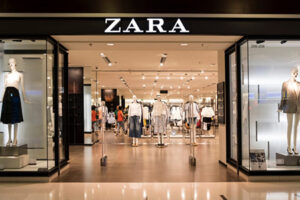
Zara is an international fast-fashion brand founded in 1975 by Amancio Ortega and Rosalia Mera of Spain.
History: Zara first opened as a small clothing store in Galicia. Zara expanded with its fast fashion model, designing and producing clothes quickly in response to ever-evolving trends. Zara became famous for its affordable yet trendy clothing at an accelerated rate from runway to storefront.
Product Range: Zara offers clothing, shoes and accessories for men, women and children of every size.
Marketing and Advertising: Zara relies heavily on word-of-mouth marketing rather than investing heavily in ads to reach its customers. Zara makes its mark through limited-edition collections and collaborations with prominent designers.
Retail and distribution: Zara products can be found both within its stores and online. Zara is an immensely profitable brand with an estimated net income of over $3 billion for 2020. Inditex also owns other fashion labels like Massimo Dutti and Pull&Bear, contributing to its bottom line as part of this larger fashion conglomerate.
Sustainability and social responsibility: Zara has received considerable criticism for its fast fashion business model, which contributes to waste and environmental damage. The company pledged to use more environmentally-friendly materials and reduce carbon emissions to address these concerns. Competition from H&M and Forever 21 also exists, and industry trends are shifting towards more eco-friendly practices.
3.Adidas:
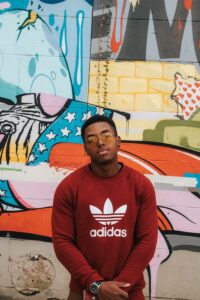
Adidas is a German sportswear brand founded by Adolf Dassler in 1949 to produce athletic footwear, apparel and accessories.
History: Adidas began as a small shoemaking shop in Bavaria, Germany, in 1949. However, their global visibility exploded after Germany won the World Cup wearing Adidas cleats in 1954 – which propelled their rise as one of the leading athletic apparel companies ever since.
Brand identity: Adidas is widely known for its iconic three-stripe logo and association with sports and fitness. Their three-stripe symbol symbolizes performance and athleticism – qualities associated with top athletes and sporting events.
Product Range: Adidas offers athletic footwear, apparel, and accessories to meet the needs of men, women, and children of all ages. Their product selection includes running shoes, soccer cleats, basketball sneakers, workout clothes, and more.
Marketing and Advertising: Adidas has long relied on prominent athletes, musicians, and designers to help promote its products. Notable collaborations include Kanye West’s Yeezy line for adidas footwear, Pharrell Williams’ Human Race collection for Human Race, and soccer players such as Lionel Messi and Paul Pogba to increase brand recognition.
Retail and Distribution: Adidas products can be found inside its own retail stores and through third-party retailers and e-commerce platforms, providing a strong presence in both physical and online retail spaces.
Brand Equity and Financial Performance: Adidas is one of the world’s most valuable apparel brands, with an estimated brand value of more than $16 billion, with revenue for 2020 reaching EUR19.8 billion.
Sustainability and Social Responsibility: Adidas has made great efforts to increase its sustainability and reduce its environmental impact, including committing to using more eco-friendly materials in its products and implementing a program to cut carbon emissions. Furthermore, Adidas is involved with various social responsibility programs through partnerships with charities and community programs.
Adidas faces competition from other athletic footwear and apparel brands, such as Nike and Under Armour, in terms of athletic footwear and apparel sales. Still, it is shifting towards sustainable practices with greater emphasis on ethical production methods and fair labour practices.
4.H&M:

H&M is a Swedish clothing brand known for offering affordable fashion to men, women, and children. Established by Erling Persson in 1947 and currently headquartered in Stockholm, Sweden.
History: H&M began as a women’s clothing store called Hennes (which translates to “hers” in Swedish). Later, in 1968, they acquired Mauritz Widforss and eventually changed their brand to become H&M – one of today’s leading fashion retailers.
Brand Identity: H&M is known for their fashionable yet budget-conscious fashion offerings, promoting inclusivity and diversity with limited edition collections crafted in collaboration with top designers or celebrities.
Product Offerings: H&M has an expansive collection of clothing and accessories for men, women, and children in all age categories – from casual wear to formal ensembles, swimwear, and activewear. In addition, they sell home goods and beauty products.
Marketing and Advertising: H&M is widely known for their high-profile collaborations with designers and celebrities such as Karl Lagerfeld, Stella McCartney, and Beyonce. In addition, the brand is involved with various philanthropic endeavours, including partnerships with UNICEF and the World Wildlife Fund.
Retail and Distribution: H&M operates over 5,000 stores in over 70 countries worldwide and offers its products via an e-commerce platform.
Brand Equity and Financial Performance: H&M is one of the world’s largest fashion retailers, with a market capitalization exceeding $21 billion and sales reaching SEK 187 billion in 2020.
Sustainability and Social Responsibility: H&M has taken steps to enhance its sustainability and minimize its environmental impact by using more sustainable materials in its products and initiating an emission reduction program. Furthermore, they have participated in various social responsibility initiatives, such as charity partnerships and community programs.
Competitors and Industry Trends: H&M faces competition from other fast fashion brands such as Zara and Forever 21. Additionally, the fashion industry is transitioning toward sustainable and eco-friendly practices, with increased emphasis on ethical production processes and fair labour practices.
5.Gucci:

Gucci is an Italian luxury fashion house founded by Guccio Gucci in 1921 and currently headquartered in Florence, Italy.
History: Gucci was first established as a small leather goods shop in Florence, Italy. However, their brand quickly rose to fame during Hollywood celebrities wearing Gucci products in the 1950s and 60s. Since then, the brand has become one of the most recognizable luxury fashion names worldwide.
Gucci is famous for its luxurious products and iconic double-G logo, representing sophistication and elegance – qualities associated with high fashion and luxury.
Product Offerings: Gucci offers a broad selection of clothing, accessories, fragrances, and home goods – such as high-end handbags, shoes and clothing for both men and women.
Marketing and advertising: Gucci has been involved in various high-profile collaborations and partnerships, such as those with musicians like Elton John and Trevor Andrew. Furthermore, the brand invests heavily in its social media presence by having strong accounts on platforms like Instagram and Twitter.
Gucci products are distributed and sold through its own retail stores, third-party retailers, and e-commerce platforms, creating a strong presence in both physical and online retail spaces.
Brand Equity and Financial Performance: Gucci is one of the world’s most valuable luxury fashion brands, with an estimated brand value exceeding $16 billion, while revenue for 2020 totalled EUR 7.4 billion.
Sustainability and Social Responsibility: Gucci has made great efforts to increase its sustainability and reduce its environmental impact, including using more eco-friendly materials in its products and implementing a program to curb carbon emissions. Furthermore, the brand has participated in various social responsibility programs, including partnerships with charities and community programs.
Competition and Industry Trends: Gucci faces stiff competition from other luxury fashion brands like Chanel and Louis Vuitton. In recent years, however, industry trends are shifting more towards eco-friendly practices, with more emphasis on ethical production practices and fair labour standards.
6.Levi’s:
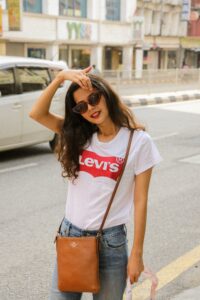
Levi’s is an American clothing brand best known for their denim jeans. Established by Levi Strauss in 1853 and is currently headquartered in San Francisco, California.
History: Levi’s started as a dry goods store during California’s Gold Rush, selling clothing, blankets, and other goods to miners. By 1873, it had made its first pair of denim jeans with copper rivets (later known as blue jeans) – becoming one of the most renowned fashion icons today.
Brand Identity: Levi’s has long been recognized for producing high-quality and long-wearing denim products for casual everyday wear, emphasizing authenticity and individuality with every piece produced. They have become synonymous with American fashion and culture.
Product range: Levi’s offers a comprehensive selection of denim clothing and accessories for both adults and children, including jeans, jackets, shirts and shorts. This brand also provides non-denim options like t-shirts, sweatshirts and backpacks.
Marketing and Advertising: Levi’s has engaged in high-profile marketing campaigns, such as collaborations with musicians such as Bob Dylan and Justin Timberlake. Furthermore, Levi’s invests heavily in its social media presence on platforms like Instagram and Facebook.
Retail and Distribution: Levi’s products are sold directly through its stores, third-party retailers, and e-commerce platforms, creating an omnichannel retail experience for its consumers. The brand boasts a strong presence in both offline and online retail spaces.
Brand Equity and Financial Performance: Levi’s stands as one of the world’s best-known denim brands, with an estimated brand value exceeding $6 billion and $4.5 billion in revenues in 2020.
Sustainability and social responsibility: Levi’s has taken steps to increase its sustainability and lower its environmental impact, such as using more eco-friendly materials for its products and implementing programs to lower water usage in its production process. Furthermore, Levi’s has participated in various social responsibility programs through partnerships with charities or community programs.
Levi’s faces competition from denim brands such as Wrangler and Lee. Fashion industry trends shifted toward eco-friendly practices, emphasizing ethical production methods and fair labour practices.
7.Chanel:
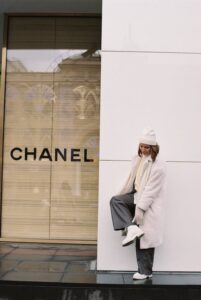
Chanel is an iconic French luxury fashion house best known for their high-end clothing, accessories, and fragrances. Established in 1909 by Coco Chanel and headquartered out of Paris, France.
Chanel began as a millinery shop in Paris before branching into clothing, accessories, and cosmetics. They became widely known for revolutionizing women’s fashion with the invention of iconic items such as “little black dresses” and Chanel suits.
Brand Identity: Chanel has long been associated with timeless elegance, luxury and sophistication. The brand also promotes an empowerment message for women to embrace their individuality while being confident within themselves.
Product Range: Chanel offers a comprehensive collection of luxury products, such as clothing, handbags, shoes, jewellery and fragrances. Unique products from their catalogue include the Chanel suit, 2.55 handbag and Chanel No five fragrance.
Marketing and Advertising: Chanel is famous for its memorable advertising campaigns featuring high-profile models and celebrities and for investing heavily in experiential marketing through fashion shows and events to promote its products.
Retail and Distribution: Chanel products can be found inside its own retail stores, high-end department stores, and boutiques, creating an omnipresent retail footprint both physically and online.
Chanel is one of the world’s most valued luxury brands, with a brand value estimated at over $20 billion and estimated revenues exceeding $12 billion in 2020.
Sustainability and Social Responsibility: Chanel has taken steps to enhance its environmental footprint and reduce carbon emissions by implementing a carbon footprint reduction program and commitments to use more eco-friendly materials in its products. Furthermore, Chanel is involved with various social responsibility initiatives through partnerships with charities and programs supporting women’s empowerment.
Competition and Industry Trends: Chanel competes with other luxury fashion brands like Louis Vuitton and Gucci for supremacy in the luxury fashion industry, which is gradually adopting more sustainable practices to reduce environmental impacts and shifting towards ethical production practices and fair labour practices.
8.Burberry:

Burberry is a British luxury fashion house best known for its clothing, accessories and fragrances with its iconic check pattern designs and classic aesthetic.
History: Burberry was established by Thomas Burberry as an outdoor clothing company in 1856, quickly becoming popular due to the groundbreaking waterproof fabric used in their trademark trench coats. Subsequently, Burberry expanded its product offering into luxury apparel, handbags and accessories.
Brand Identity: Burberry is known for its classic yet timeless designs featuring its iconic check pattern. Their brand image conveys sophistication and luxury that resonates with customers who value quality craftsmanship and an emphasis on detail.
Burberry provides an expansive selection of luxurious products, such as clothing, handbags, shoes and fragrances. Some iconic Burberry pieces include their trench coat, check scarf and monogram bag.
Marketing and Advertising: Burberry is well known for its creative advertising campaigns that often feature high-profile models and celebrities in its campaigns. Furthermore, social media allows Burberry to reach younger audiences while artists and musicians collaborate with the brand to promote its products.
Retail and Distribution: Burberry products can be found for sale within its own stores and high-end department stores and boutiques, providing it with a strong presence both physically and online.
Brand Equity and Financial Performance: Burberry is one of the world’s most valuable luxury brands, with an estimated brand value of over $7 billion and an estimated revenue of $2.6 billion for 2020.
Sustainability and social responsibility: Burberry has taken measures to improve and lower its environmental impact, such as initiating a carbon offsetting program and using more eco-friendly materials in its products. In addition, Burberry is actively involved in various social responsibility efforts, such as partnerships with charities or programs supporting diversity and inclusion.
Competition and industry trends: Burberry faces stiff competition from other luxury fashion brands like Louis Vuitton and Gucci. As the luxury fashion industry is shifting towards eco-friendly practices and ethical production, with fair labour practices becoming more prominent, Burberry has taken significant measures to address these concerns and remains well-positioned to adapt to ever-evolving industry trends.
9.Louis Vuitton:
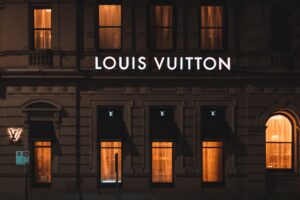
Louis Vuitton is a French luxury fashion house known for their high-quality leather goods, accessories, and clothing. Their name has become the hallmark of elegance across the world.
History: Louis Vuitton was first established by Louis Vuitton himself in Paris as a trunk-making business in 1854, quickly earning acclaim for its high-quality craftsmanship and innovative designs. Today, it is one of the world’s most valuable fashion brands.
Louis Vuitton is well known for their iconic monogrammed canvas used on numerous products. This iconic brand also stands for timeless designs that exude luxury and sophistication.
Product Range: Louis Vuitton provides an impressive array of goods, such as leather goods, accessories, clothing and fragrances. Their most coveted offerings are their handbags, luggage and wallets.
Marketing and Advertising: Louis Vuitton has successfully used marketing and advertising campaigns to foster its luxurious image, working closely with prominent celebrities and influencers to promote its products while featuring aspirational lifestyles and exotic locales in its ads.
Louis Vuitton products can be found at its stores, high-end department stores, and boutiques – giving it an unrivalled physical and virtual presence in retail spaces.
Brand Equity and Financial Performance: Louis Vuitton is one of the world’s most valuable fashion brands, with an estimated brand value of over $47 billion and estimated revenues for 2020 estimated to exceed $14 billion.
Sustainability and social responsibility: Louis Vuitton has made efforts to enhance its sustainability and reduce its environmental impact, using more eco-friendly materials in its products while implementing waste reduction programs to lower emissions. Furthermore, Louis Vuitton participates in various social responsibility initiatives, including programs supporting education and the arts.
Competition and Industry Trends: Louis Vuitton faces fierce competition from other luxury fashion brands like Chanel and Hermes. As the fashion industry shifts toward eco-friendly and ethical production practices, Louis Vuitton has taken significant measures to meet changing industry trends and address sustainability initiatives such as fair labour practices. Louis Vuitton has made considerable efforts to respond to these issues and is ready to adapt to evolving industry norms.
10.Ralph Lauren:
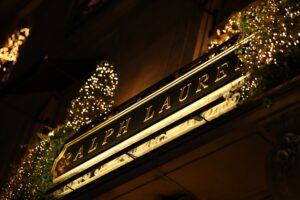
Ralph Lauren is an iconic American fashion brand known for its sophisticated yet classic designs, offering clothing, accessories, home goods, fragrances and more.
History: Ralph Lauren was founded by himself in 1967 as a men’s necktie company. Soon after that, they expanded to offer clothing and accessories for men, women, and children, as well as being a globally acclaimed fashion brand with a strong presence in the luxury market.
Ralph Lauren is known for its timeless designs that epitomize American elegance and sophistication. Their iconic Polo logo is instantly recognizable.
Ralph Lauren provides an expansive selection of luxury products, such as clothing, accessories, and fragrances. Some of its most beloved offerings are Polo shirts, cashmere sweaters, and leather handbags.
Marketing and Advertising: Ralph Lauren has designed its marketing and advertising campaigns to project an aspirational lifestyle image for its products, engaging high-profile athletes and celebrities to promote them while featuring idyllic settings and lifestyle images as inspiration in its advertisements.
Retail and Distribution: Ralph Lauren products can be found both through its retail stores and high-end department stores and boutiques. Ralph Lauren enjoys an established presence both physically and virtually.
Brand Equity and Financial Performance: Ralph Lauren is one of the world’s most valuable fashion brands, with an estimated brand value of $8 billion and annual revenues estimated to exceed $6.34 billion in 2020.
Sustainability and Social Responsibility: Ralph Lauren has made significant efforts to reduce its environmental impact and enhance its sustainability, including an initiative to lower its carbon footprint and commit to using more eco-friendly materials in its products. Ralph Lauren has also participated in social responsibility initiatives, including those supporting diversity and inclusion.
Competition and industry trends: Ralph Lauren faces stiff competition from luxury fashion brands such as Chanel and Gucci. As fashion moves towards sustainability and eco-friendly practices, and an increasing emphasis is placed on ethical production methods and fair labour practices, Ralph Lauren has taken steps to address these concerns effectively to keep pace with rapidly shifting industry trends.
11.Tommy Hilfiger:
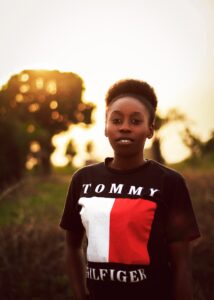
Tommy Hilfiger is an iconic American fashion brand known for their classic yet preppy designs, offering clothing, accessories and fragrances tailored specifically for men, women and children.
History: Tommy Hilfiger was established by its founder in 1985 as a men’s clothing company. Within five years, it quickly expanded to offer apparel and accessories for men, women, and children – becoming one of the leading casual luxury fashion brands worldwide.
Tommy Hilfiger is well known for its classic yet preppy designs that embody American style and casual elegance. Their iconic red, white, and blue logo has become instantly recognizable and easily recognizable to its loyal customer base.
Product Range: Tommy Hilfiger offers an expansive array of clothing, accessories and fragrance products, such as its popular polo shirts, chinos and denim items.
Marketing and Advertising: Tommy Hilfiger has used marketing and advertising campaigns to emphasize its preppy yet casual image. Working closely with celebrities and influencers to promote its products, Tommy Hilfiger ads often depict idyllic settings or aspirational lifestyles.
Retail and Distribution: Tommy Hilfiger products can be found for sale at its own retail stores, high-end department stores, and boutiques, making a strong statement in physical and online retail spaces.
Brand Equity and Financial Performance: Tommy Hilfiger is one of the most valuable fashion brands worldwide, boasting a brand value above $5 billion and estimated revenue exceeding $4 billion for 2020.
Sustainability and social responsibility: Tommy Hilfiger has made significant efforts to enhance its sustainability and reduce its environmental impact, including an initiative designed to decrease its carbon footprint and commit to use more eco-friendly materials in its products. Furthermore, Tommy Hilfiger is involved with various social responsibility programs that support diversity and inclusion initiatives.
Competition and Industry Trends: Tommy Hilfiger is competing with casual luxury fashion brands such as Ralph Lauren and Lacoste for market share in casual luxury fashion. Meanwhile, industry trends are moving toward eco-friendly production processes, with ethical production being given more consideration; Tommy Hilfiger has taken significant measures to address these concerns and is well-positioned to adapt to changing industry demands.
These are only a handful of the top clothing brands around. Each boasts its distinct style and identity while remaining popular with consumers worldwide.
Frequently Asked Questions:
1. Which are the leading clothing brands worldwide?
Some of the leading clothing brands include Nike, Zara, H&M, Adidas, Gucci, Chanel, Levi’s and Calvin Klein.
2. Which clothing brand is the most expensive?
Chanel, Gucci and Prada are some of the world’s most expensive clothing brands.
3.Which clothing brand offers the lowest costs per item?
H&M, Zara and Uniqlo are three of the most affordable clothing brands available worldwide.
4.What is the most widely recognized sportswear brand?
Nike is widely considered the leading sportswear brand worldwide.
5.Which denim brand is considered most iconic?
Levi’s is one of the world’s premier denim brands.
6.Which clothing brand is most eco-friendly?
Patagonia is widely acknowledged to be one of the most eco-friendly clothing brands available.
7.Which clothing brand has the widest global presence?
Zara is widely recognized as being one of the most global fashion brands.
8.Which clothing brand boasts the highest revenue?
Nike is currently the clothing brand with the highest revenue.
9.Which clothing brand is the oldest?
Brooks Brothers is one of the oldest clothing brands, founded in 1818.
10.Which clothing brand is considered most luxurious?
Chanel, Gucci and Louis Vuitton are some of the world’s most luxurious clothing brands.
